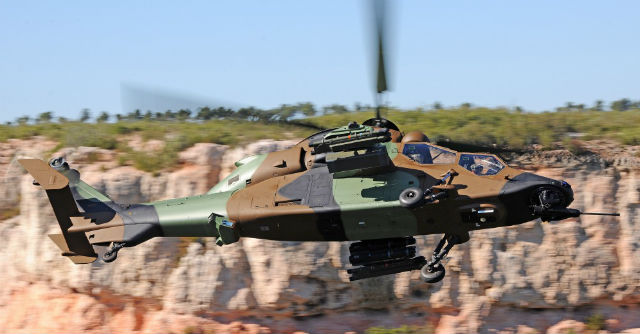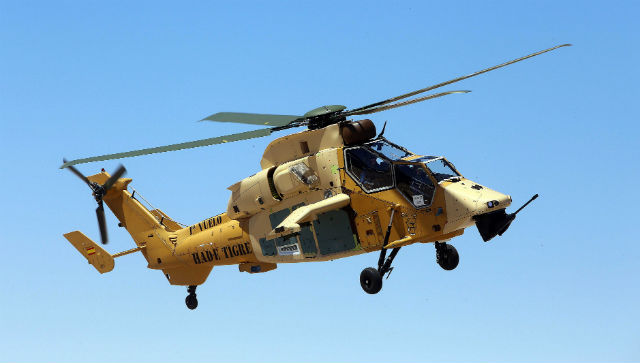Defence procurement body OCCAR is in the early stages of defining the Mk III mid-life upgrade for the Airbus Helicopters Tiger, but admits uncertainty over Australia’s participation.
Although OCCAR is a European body and Canberra is not even an associate member, as one of four customers for the Tiger, it was assumed it would join the Mk III effort.
But Australia has been highly critical of its 22-strong Tiger fleet and in a recent defence white paper suggested they could be phased out in the mid-2020s.
And, says Cyril Goutard, Tiger programme manager at OCCAR, work on the Mk III definition phase is being driven by the attack helicopter’s other three customers: France, Germany and Spain.
“We are discussing with Australia whether they will be part of that process,” he says.
Goutard says the work is currently in the “preparation phase” and is not yet an official programme. “Nations are starting to harmonise their requirements,” he says.
Development activities are due to start “before 2020”, with a decision on the firm configuration likely in 2018 or 2019 ahead of production in the mid-2020s.
Key upgrades will be to the helicopter’s avionics and weapons, notably replacement of the various anti-tank missiles, including the Lockheed Martin AGM-114 Hellfire and Rafael Spike, used by the Tiger’s European operators; it had been thought that a common missile standard was being sought.
“We need to change the missile, that is certain, but whether it is common or not, the nations will decide,” says Goutard.

Airbus Helicopters
In the meantime, OCCAR in late December 2016 launched development of the Mk II upgrade on behalf of France.
The modification sees the addition of laser-guided rockets developed by Thales subsidiary TDA Armements and upgrades to the helicopter’s GPS receiver and CRPA antenna system, also provided by Thales.
It will be applied to the final 24 of the 40 HAP-model Tigers, operated by French army aviation units, which Airbus Helicopters is currently raising to the missile-equipped HAD standard.First delivery is scheduled for mid-2020, with production running until 2023, says OCCAR.
The first three Tiger HAPs are currently in the upgrade process in Marignane, France, says Goutard; 13 more will follow before the Mk II standard kicks in, he says.
In addition, Paris has so far received 21 examples of the baseline HAD model, with an additional 10 still be delivered.

Airbus Helicopters
Meanwhile, Spain has taken delivery of its first four Tiger HAD/Es in the improved Block 2 configuration.
They will be based at Almagro, near Ciudad Real in the centre of the country, and operated by the Spanish army’s 1st Attack Helicopter Battalion. The unit already has 10 Tigers at the facility, delivered to the HAP and HAD Block 1 standards.
The Block 2 upgrades, integrated by Airbus Helicopters at its Albacete facility, include improvements to the man-machine interface software, enhanced datalinks, an enlarged firing envelope for the Rafael Spike missile and naval capabilities.
Qualification of the modifications was obtained on 5 December.
And, says Goutard, Madrid could also benefit from the Mk II upgrade: “Spain is interested in the laser-guided rockets. It would be quite feasible for them to implement that.”
Source: FlightGlobal.com


























